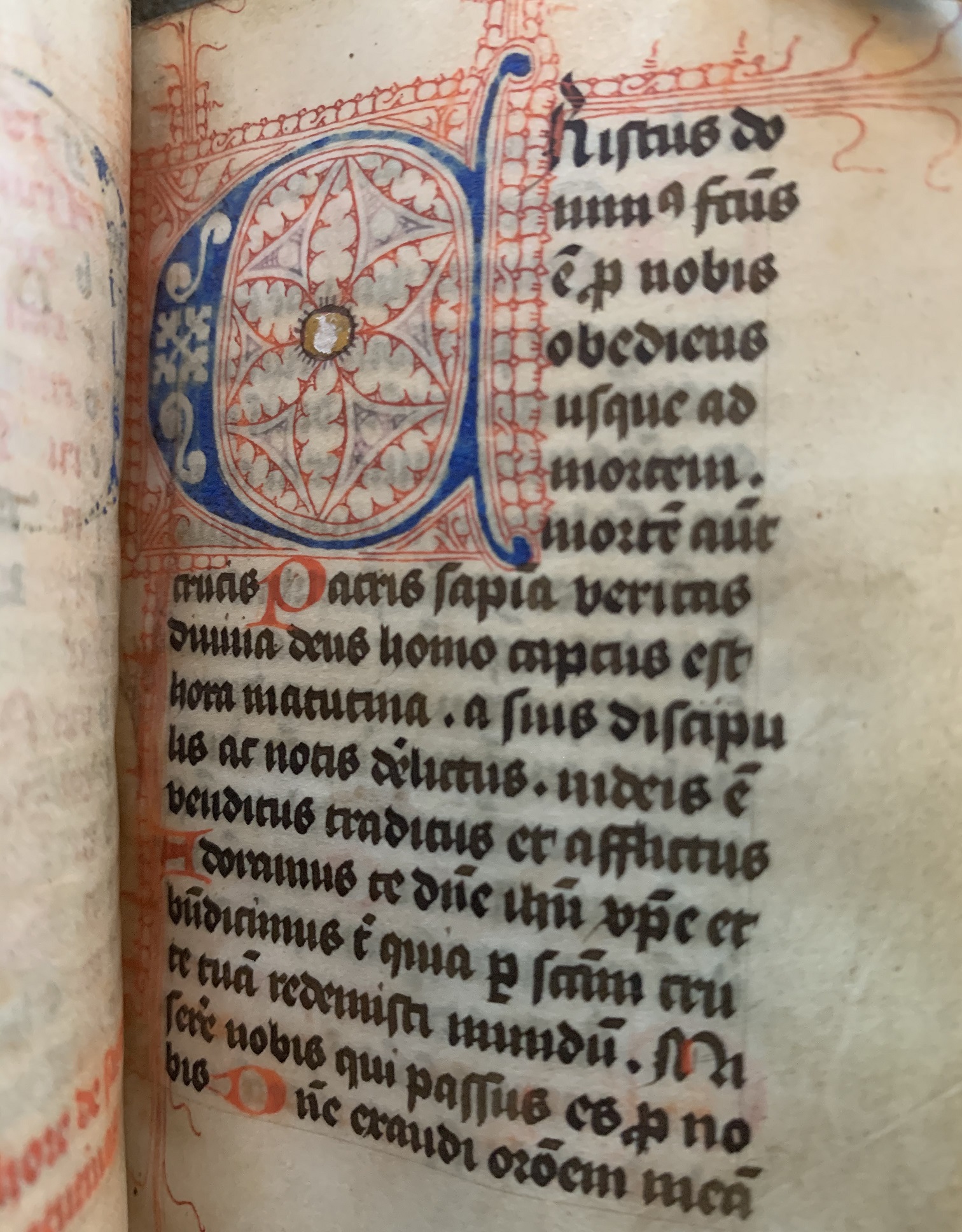Special Collections acquires second medieval manuscript
Up until late last year Special Collections has been home to a single, medieval manuscript: a particularly fine book of hours generously donated to the Libraries by John S. McIlhenny in 1991 as the Library's ceremonial two millionth book. Resting quietly and safely in the vault, this treasured little prayer book from the fifteenth century served as a tangible link to book production prior to the widespread use of the printing press, and delighted students and researchers alike with its crisp parchment pages and delicate illustrations. But its singular status in the collection made comparison with other examples difficult and stripped it of some of its contextualization. And it was lonely. No more! It is a great pleasure introduce our second complete medieval manuscript: a book of hours similarly dating from the late fifteenth century.

Books of hours were prayer books meant to guide lay readers through the day, with prayers for specific hours of the day, as well as through the year, with a calendar that allowed for the calculation of saints' days and religious holidays such as Easter. These books are the most common medieval manuscripts to survive, and they vary widely in their quality, from opulent Les très riches heures du duc de Berry, through McIlhenny's high-quality donation, down to more workaday examples, showing the use and love of generations of owners. Our new acquisition is of the latter variety, showing the prayer book as a useful -- and used! -- object, meant more to instruct than amaze. At just over four inches tall, three wide, and one thick, this book is small enough to fit in a pocket or bag, befitting an item meant to be carried with its owner for use throughout the day. The cover is worn, and its metal clasps are missing or damaged, but the binding is in surprisingly good shape for its age, a testament of the care with which it was kept. The small vellum pages are crowded with small writing that is nevertheless neat and quite readable. (Well, if you're up to speed on your medieval Latin.)

There are none of the illustrations that decorate more sumptuous books, but this acquisition does have a number of delights for a careful reader, including excellent lettering, decorated initial letters, as well as the odd doodle. Possibly the greatest joy is simply holding the book in your hand, where it fits comfortably, tailor-made for convenient and transportable daily use. A book such as this would have been a prized personal possession passed down from generation to generation. The book itself is likely the production of a professional workshop of men, but as most such works were owned by women, its gentle wear marks probably record the devotional reading of women.

This book of hours was likely produced in northern France (or possibly Flanders) and follows the "use of Sarum": the liturgical traditions developed in the eleventh century in Salisbury and in common use throughout England until the Reformation, and its calendar features the saints' days of prominent English saints. By the fifteenth century most such books were made in professional workshops outside of monasteries, and this book was likely produced on the continent, where the industry was more advanced and trade more robust, for export and sale in England. With little else to go on in terms of its provenance, from there the book's trip through five centuries and across an ocean (at least once!) is a work of imagination. This flight of fancy can be a good distraction of a winter morning, imagining how this book survived the Reformation, the English Civil War, plagues, world wars, and the rise and fall of nations and empires, somehow slipping through the historical cracks to make its way onto our shelves here at LSU.

This acquisition was made possible once again by John S. McIlhenny, through a grant from the Coypu Foundation, a non-profit charity organized to extend McIlhenny's extensive philanthropic work after his death. McIlhenny's largest donation was the E. A. McIlhenny Natural History Collection, named in honor of his uncle. Special Collections is honored once again to be the recipient of McIlhenny's largess, and would like to think that he would approve of our finding his book of hours a friend with which we can pair it. Watch this space in the coming weeks for an announcement of another major acquisition courtesy of the Coypu Foundation. Thanks as well to bookseller James Gray, from whom this is our second major acquisition.

